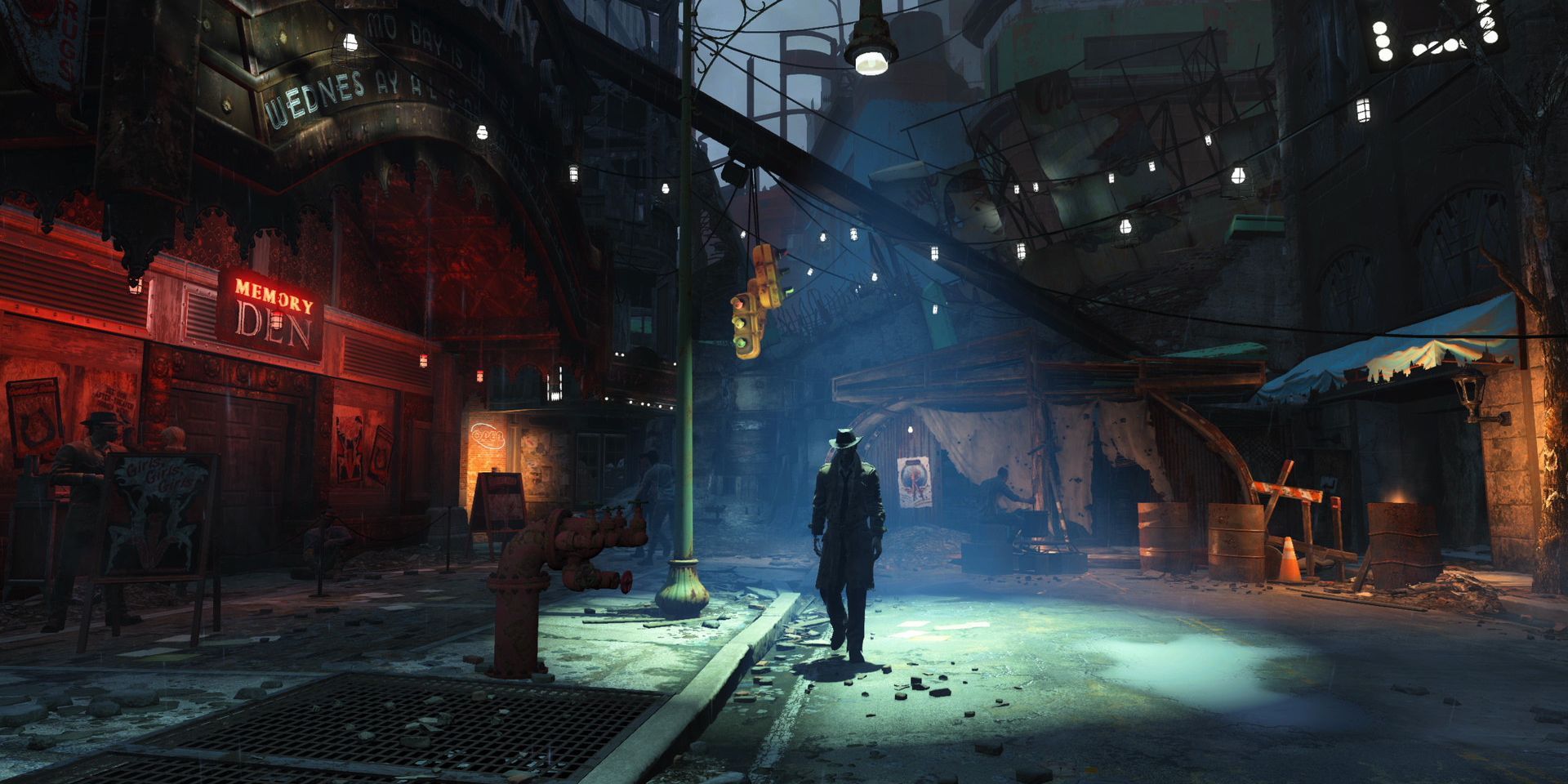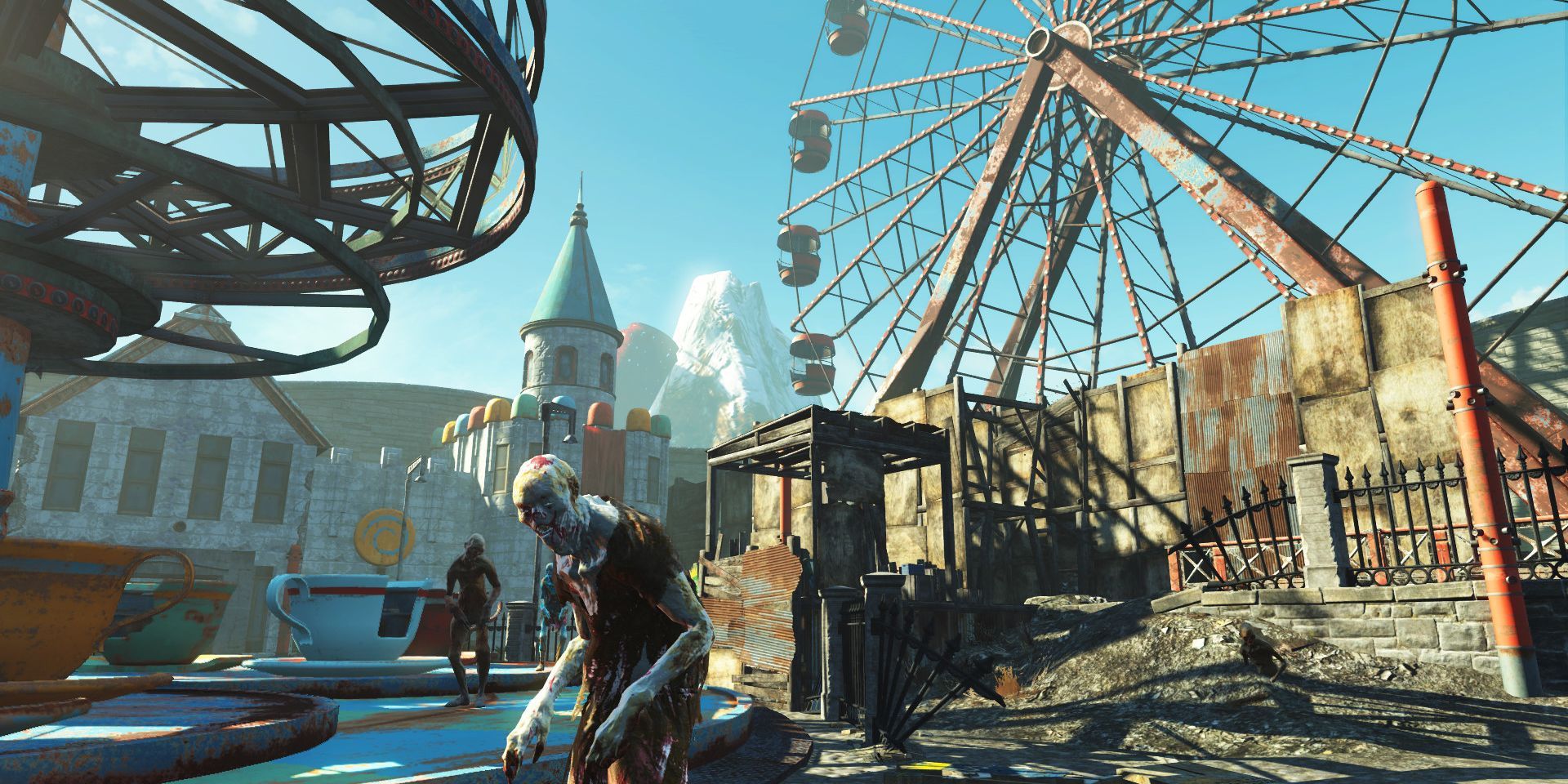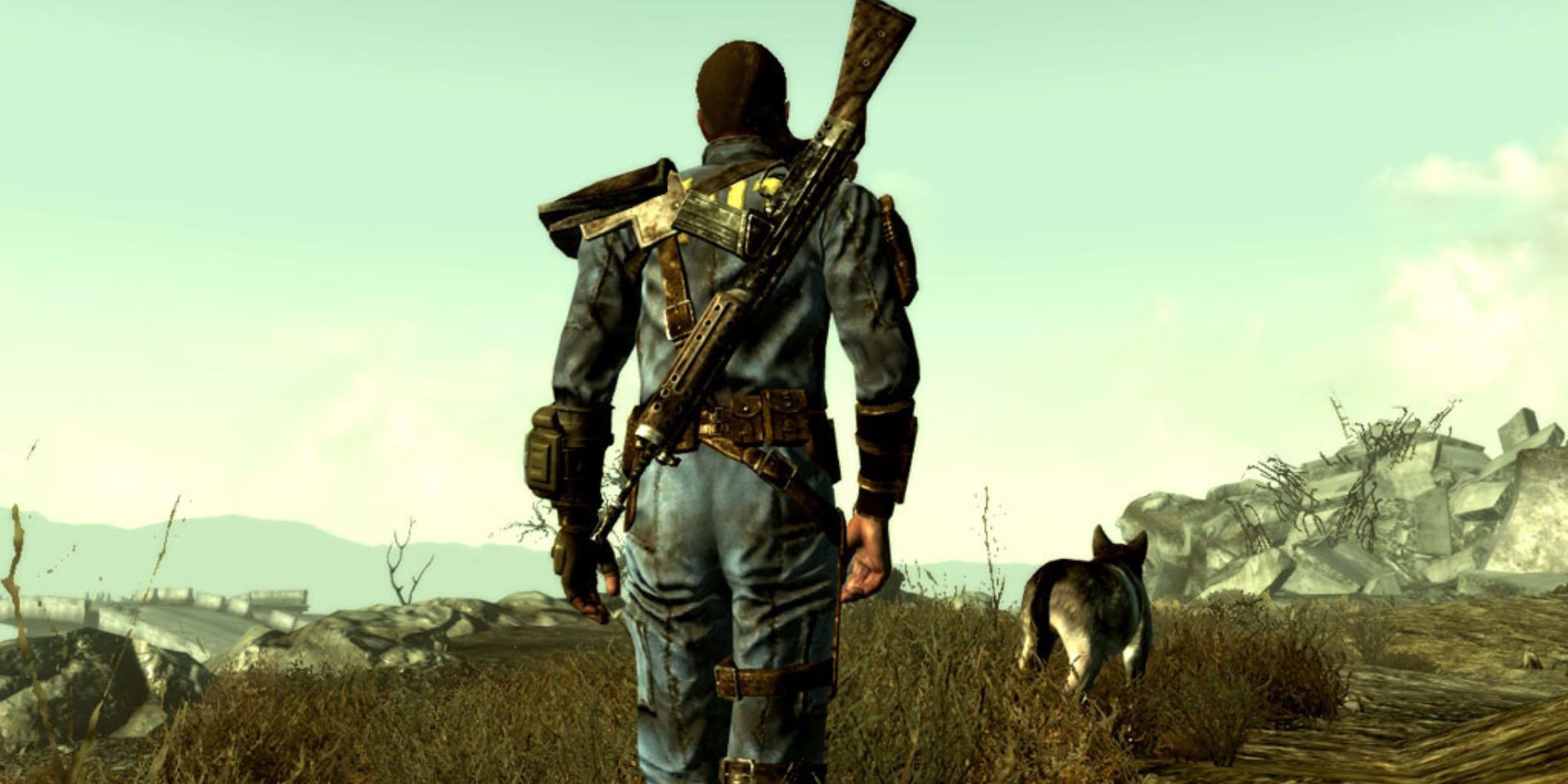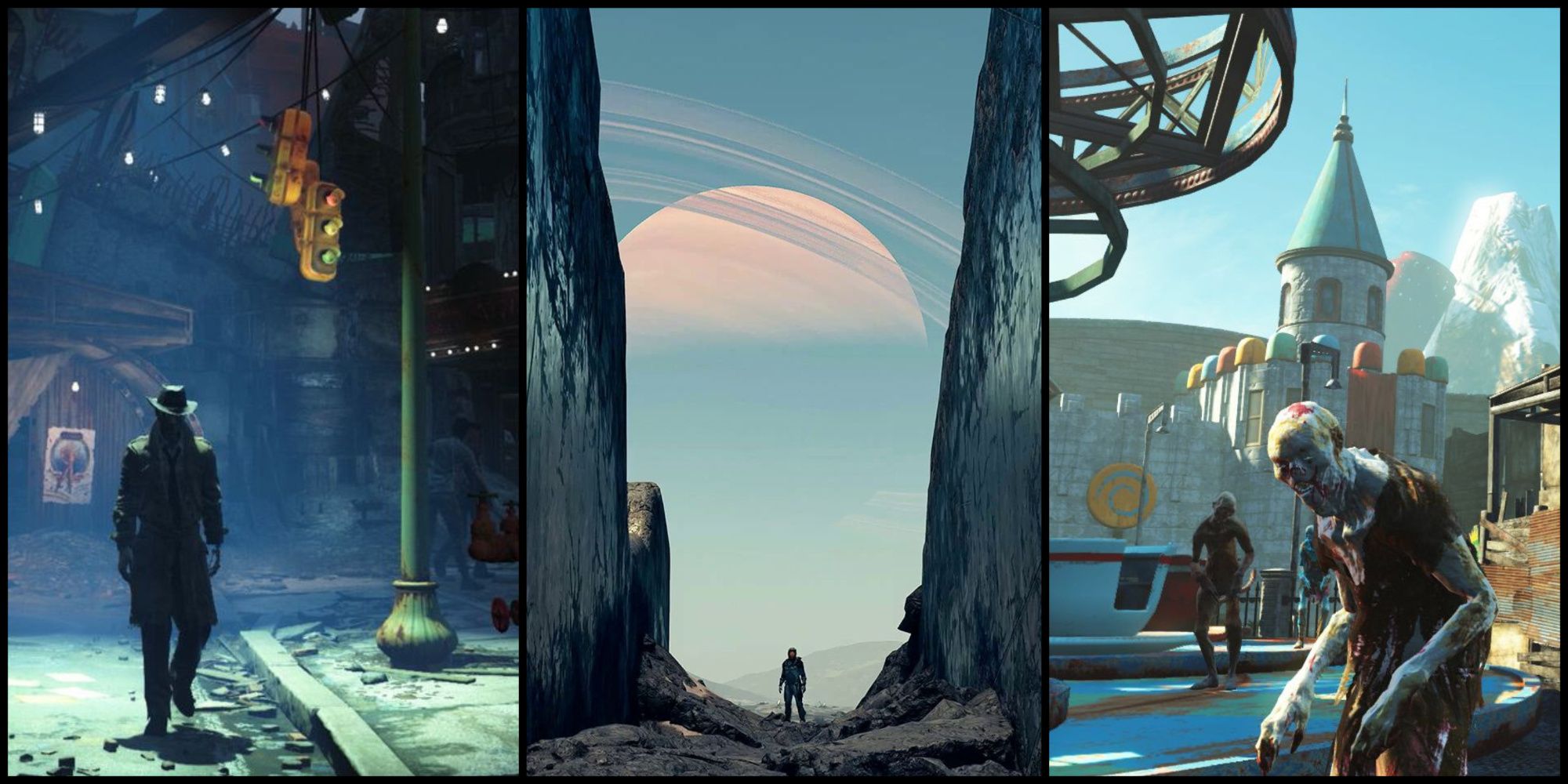
Highlights
- Bethesda games are known for sprawling open worlds, but endings are often not seen by most players.
- Endings in Bethesda RPGs like Fallout 4 can take a dark turn, especially when siding with the Institute.
- Starfield’s ending can be interpreted as a triumph of nihilism, suggesting a disregard for NPCs in the game world.
Bethesda (or Bethesda Game Studios) isn’t known for its dark endings. Most of their games aren’t even known for their endings; they are instead known for their sprawling open worlds, full of characters and side quests that seem designed to sidetrack the player. It’s likely that most players, even more than what is already the norm for video games, don’t finish Bethesda’s RPGs. After all, even the more dedicated fans of those titles don’t always complete their playthrough.
Starfield: 7 Easter Eggs To Other Bethesda Games
Some of the best Starfield easter eggs involve nods and references to other Bethesda games.
Even if those games are designed knowing that most players won’t ever see the ending, that doesn’t mean that they weren’t crafted with care. For some of these franchises, The Elder Scrolls chief among them, the ending is what ties one title to the next. A lot of the time, those endings are quite plain, in line with the usual adventure video game fair. But sometimes, knowingly or not, they become something quite dark.
5 Fallout 4
The Institute Ending Leads To A Dark World
Fallout 4
- Released
- November 10, 2015
Fallout 4’s ending isn’t always a dark one if the player chooses to avoid it. The protagonist and their companions are always forced to wipe out the enemy factions, but that feels more like being roped into the implications of an existing political struggle than a proper bad ending. However, things become far worse if the player chooses to aid the institute, the organization responsible for creating and using synths.
There is little doubt about the role of androids, also known as synths, in the world of Fallout 4. Synths are synthetic humans through and through. They feel like humans do, and they have a will of their own, separate from the Institute. Yet they are feared, hunted, or treated like a resource to be exploited, more akin to machines than humans. They also serve as a thinly veiled allegory about slavery. Siding with the Institute establishes a future where the end, the reconstruction of the world as it was, always justifies the means.
4 Fallout 4: Nuka-World
Revealing Dark Truths About The Players
- Platforms: PS4, Xbox One, PC
- Released: August 29, 2016
- Developers: Bethesda
- Genres: RPG, Action
The Nuka-World expansion for Fallout 4 isn’t really trying to be dark. But in focusing on a world dominated by raider factions, taking much inspiration from classic but tacky post-apocalypse media, Nuka-World pushes the limits of the Fallout franchise too far. Here, the irony that the series is based on, the juxtaposition between what led to the post-apocalypse and the inability of this world to leave its mini-nukes and power armors behind, suddenly breaks.
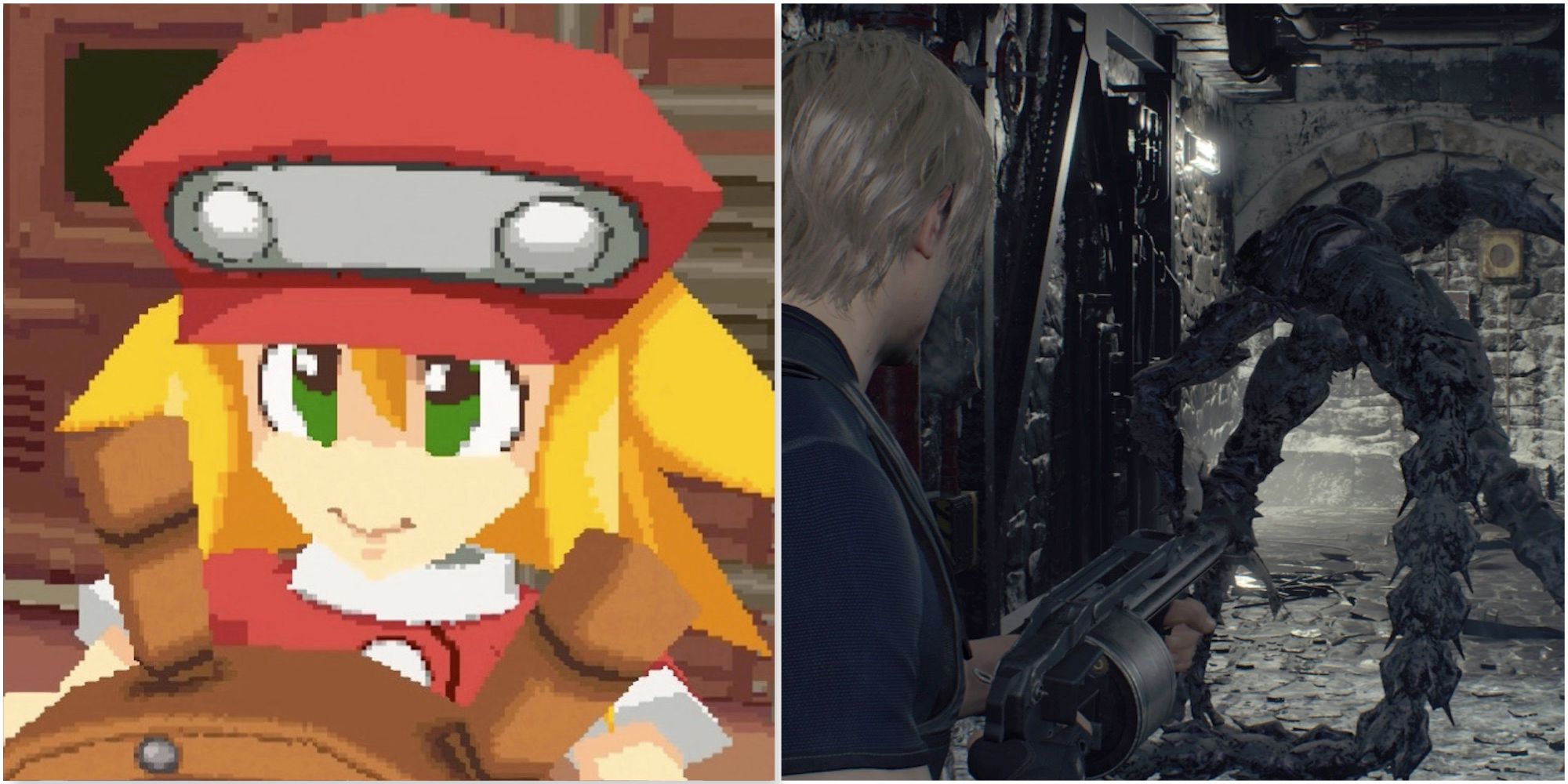
7 Settings Bethesda Should Use After Starfield
With Starfield out, here’s what other settings for open-world RPGs Bethesda could explore in its next big IP.
Nuka-World isn’t immoral, it’s amoral. It’s hard to imagine anything more grim than the most powerful being in the universe, the player character, forgoing morality altogether. If the player wants to rule the world of raiders, a must for reaching the end of the expansion, they must play the part. They have rebuilt the world with their settlements, and it’s finally time to destroy it. The protagonist plays both parts – the survivors and the riders they struggle against. There isn’t a good reason to do this besides the benefits granted by the DLC, but that seems to be enough. Now, isn’t that dark?
3 Fallout 3
A Straightforward Tragic Ending
Fallout 3
- Released
- October 28, 2008
Fallout 3’s idea of a dark ending isn’t going to be everyone’s cup of tea. Its ending was divisive when the game came out, and it’s still unpopular with many players, so much so that one of the game’s expansions rectifies the ending and adds a new epilogue. But this ending, although it carries a much stronger sense of finality, isn’t very dark at all.
Most of Fallout 3 is spent looking for the protagonist’s father, who is eventually revealed to be working on a pre-war water purifier. Wide access to water untouched by radiation would completely change the future of this world, making farmland and drinkable water a common good. War ensues between different factions, as controlling this machine will lead to great power over the entire region. Regardless of how the rest of the story goes, the player is forced to sacrifice themselves to activate the purifier.
A Classic & Dark Expansion Pack
The Elder Scrolls IV: Oblivion
The story of The Elder Scrolls 4: Oblivion and its ending aren’t particularly dark; they are a bit grotesque at points, definitely tragic, but ultimately lead to a heroic victory of good over evil. The same isn’t true for the Shivering Isles expansion pack, however. For a long time, this expansion was known for being really weird and almost experimental, but a different aspect has since taken priority.

6 Most Immersive Bethesda Games, Ranked
Bethesda is excellent at creating immersive worlds, where the gameplay, characters, and plots make it hard to leave for reality.
The Shivering Isles is a location in the realm of Oblivion, the realm of the Daedric gods. They were once the domain of Jyggalag, Daedric Prince of Order, later transformed into the mad Sheogorath by a curse. In order to free Jyggalag and stabilize the islands, removing the orderly presence of the old Prince, the player must take the mantle of Sheogorath themselves. And so, the player character of Oblivion becomes the new Sheogorath, gaining power and some form of immortality but leaving their mortal, sane life behind.
1 Starfield
A Metanarrative Filled With Dark Implications
Starfield
- Released
- September 6, 2023
Not everyone will interpret Starfield’s ending as dark, but that’s fine. Just like any other Bethesda game, Starfield has a vast and fragmented story that is sure to leave a different impression based on what each playthrough looks like and on the players’ dispositions. That said, it’s not hard to read this ending as the triumph of nihilism. The structure of the world justifies contempt towards the lives of others, just like how a bored gamer can show contempt towards the NPCs of a video game.
The ending of Starfield sees the player character finding the Unity, a portal to another dimension that just so happens to begin at the start of the game’s story. Starfield is not the first game to find a narrative justification for its New Game Plus mode. Regardless, many players took this event as a justification to stop treating Starfield as a real, breathing world. After all, why care about those people? Why spare them the usual meaningless video game violence if they are still alive in the next universe?
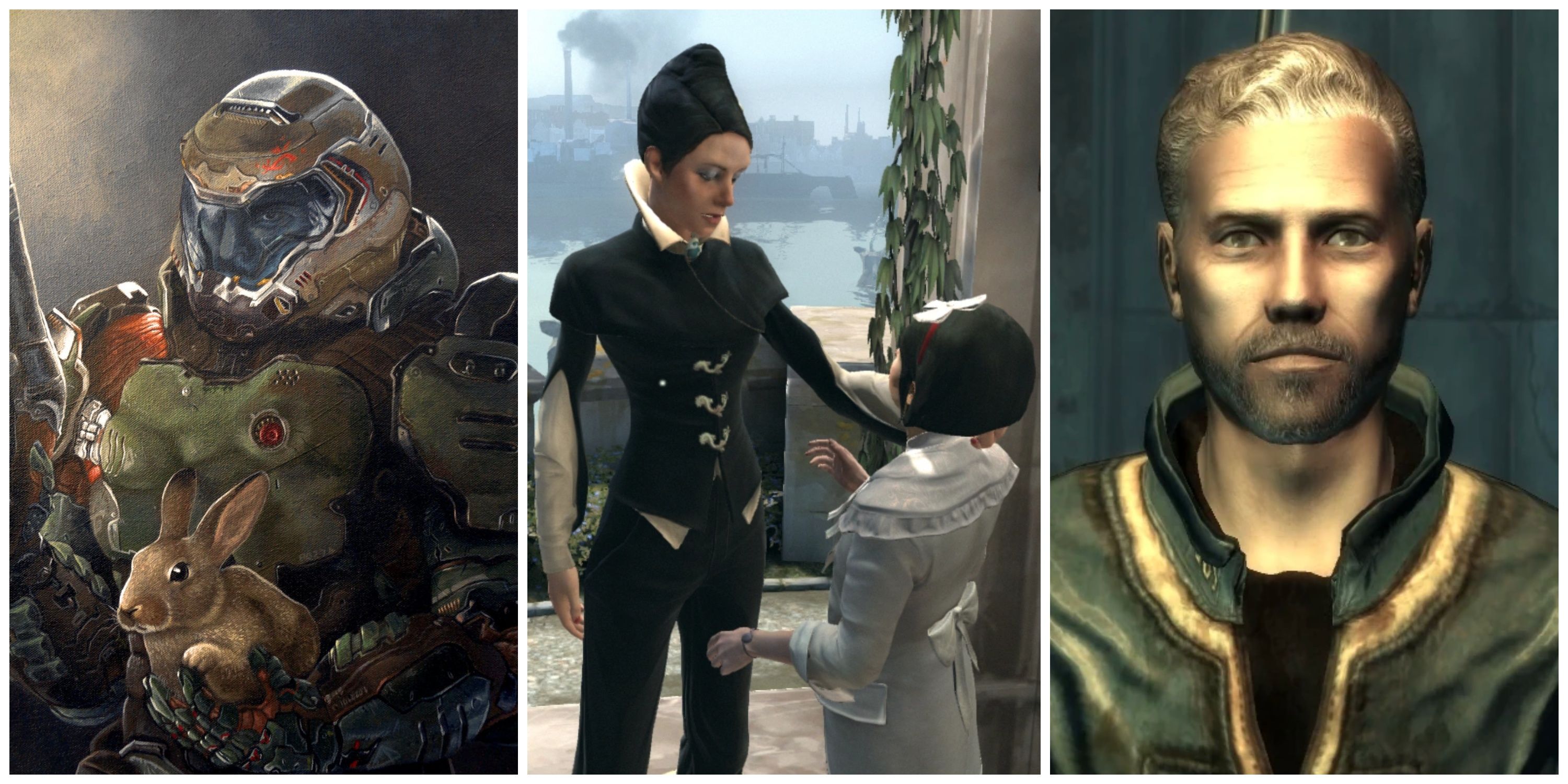
5 Saddest Deaths in Bethesda Games, Ranked
Some deaths in games developed or published by Bethesda have affected protagonists and players alike, leaving them heartbroken in the process.
